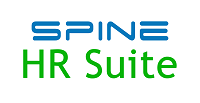Description

HR 360

OrangeHRM
Comprehensive Overview: HR 360 vs OrangeHRM
HR 360 and OrangeHRM are both tools designed to streamline and optimize Human Resource (HR) management processes in organizations, but they have different focuses and attributes. Let's delve into each tool, their functionalities, target markets, market share, user base, and key differentiating factors.
HR 360
a) Primary Functions and Target Markets:
Primary Functions:
- HR Compliance Library: Offers resources, guides, and templates for HR policies, procedures, and compliance. It's designed to help HR professionals stay compliant with the latest employment laws and regulations.
- Training and Educational Content: Provides a range of educational materials, including webinars, videos, and articles that cover various HR topics like benefits, performance management, and employee relations.
- Documents and Templates: Offers a wide array of documents and templates that HR professionals can use for creating their own HR policies and procedures.
Target Markets:
- Primarily targets small to medium-sized businesses (SMBs) that need comprehensive HR compliance resources without the need for a full-fledged HR software system.
- Ideal for companies that already have an HR process in place but are looking to supplement their HR departments with additional resources and ensure compliance.
b) Market Share and User Base:
- HR 360 is more niche and doesn't generally encompass a significant portion of the market share compared to more comprehensive HR management software.
- Its user base primarily consists of SMBs looking for cost-effective HR compliance and resource solutions.
OrangeHRM
a) Primary Functions and Target Markets:
Primary Functions:
- Core HR Functionality: Manages employee information, employee self-service, and HR reporting.
- Performance Management: Allows businesses to track and manage employee performance through evaluation and feedback mechanisms.
- Recruitment: Provides tools for managing job postings, applications, and tracking candidates throughout the recruitment process.
- Time and Attendance: Facilitates tracking of employee time, leave management, and attendance.
Target Markets:
- Targets businesses of all sizes, especially those that need a comprehensive HR management solution. It is particularly appealing to SMBs and enterprises that require customizable HR software.
- Industries served include technology, healthcare, retail, and manufacturing, among others.
b) Market Share and User Base:
- OrangeHRM is one of the more recognized names in the HR software market, especially known among open-source software options.
- It has a considerable user base worldwide and is popular among organizations looking for cost-effective yet robust HR solutions.
c) Key Differentiating Factors
-
Scope of Services:
- HR 360: Specializes in HR compliance and educational resources, with a focus on documentation and ensuring adherence to legal HR standards. It is not a comprehensive HR management tool but rather a supplement to existing HR systems.
- OrangeHRM: Offers a full suite of HR management functionalities, streamlining all aspects of HR from hiring to retiring. It's a more robust solution suitable for companies seeking end-to-end HR management software.
-
Business Model:
- HR 360: Predominantly operates as a subscription-based service that provides access to compliance resources.
- OrangeHRM: Offers both open-source and enterprise-level paid versions, providing flexibility for companies to choose the extent of functionality they need.
-
Customization and Integration:
- OrangeHRM: Known for its customizable modules and ability to integrate with other enterprise systems, allowing businesses to tailor the software to their specific HR needs.
- HR 360: Less focused on software integration and customization, with its strength lying in the breadth of its compliance and educational materials.
In summary, HR 360 serves as a resource provider primarily focused on HR compliance, while OrangeHRM is a comprehensive HR software solution offering a range of functionalities covering all aspects of human resources management. Their adoption depends mainly on the specific needs of the organization — whether the priority is augmenting HR compliance or implementing a full-function HR management system.
Contact Info

Year founded :
Not Available
Not Available
Not Available
Mexico
http://www.linkedin.com/company/hr-360

Year founded :
2006
+1 914-458-4254
Not Available
United States
http://www.linkedin.com/company/orangehrm
Feature Similarity Breakdown: HR 360, OrangeHRM
To accurately provide a breakdown of feature similarities and differences between HR 360 and OrangeHRM, let's look into both products in detail:
a) Common Core Features:
Both HR 360 and OrangeHRM are Human Resource Management Systems (HRMS) designed to help organizations manage their HR functions efficiently. They share several core features, including:
-
Employee Database Management: Both platforms offer comprehensive employee records management, allowing HR departments to store and manage employee information securely.
-
Payroll Management: They both provide tools to calculate and manage payrolls, though the degree of detail and automation may vary.
-
Attendance and Leave Management: Each offers functionalities for tracking employee attendance and managing leave requests and approvals.
-
Performance Management: Both systems provide performance management tools to assist in evaluating employee performance and setting goals.
-
Recruitment & Onboarding: These platforms offer modules to streamline the recruitment process and improve the onboarding experience for new hires.
-
Reporting & Analytics: Both HR 360 and OrangeHRM offer reporting tools to generate insights into various HR metrics for data-driven decisions.
b) User Interface Comparison:
-
HR 360: Typically designed with a focus on providing a comprehensive user experience through an integrated approach. HR 360 might offer a more traditional or straightforward UI focusing on ease of navigation and access to HR documents and resources.
-
OrangeHRM: Known for its modern, intuitive user interface that is highly customizable. OrangeHRM often includes drag-and-drop functionalities and dashboard widgets for a more personalized user experience.
The choice between the UIs may depend on user preference for traditional interfaces versus more dynamic customization features.
c) Unique Features:
-
HR 360:
- Employee Management Library: HR 360 often emphasizes a comprehensive resource library with HR documents, compliance guidelines, and educational materials that can be unique to its offering.
- Integration with External Resources: It may include unique integrations or partnerships with other platforms, providing additional resources for HR professionals.
-
OrangeHRM:
- Open Source Flexibility: One of OrangeHRM's unique selling points is its open-source model, allowing for greater flexibility and customization by users.
- Modular Add-ons: OrangeHRM is known for its modular approach, allowing organizations to add or remove functionalities as needed, including custom modules developed via its open-source community.
Overall, while both HR 360 and OrangeHRM share core HR management features, they differentiate themselves through their user interface designs and unique offerings that cater to specific organizational needs. Organizations may choose based on factors such as UI preference, customization needs, and integration capabilities.
Features

Not Available

Not Available
Best Fit Use Cases: HR 360, OrangeHRM
HR 360 and OrangeHRM are both human resources management solutions but cater to different needs and types of organizations. Here's how each fits into different business contexts:
HR 360
a) Best Fit Use Cases: HR 360 is particularly well-suited for organizations that need comprehensive compliance resources in addition to traditional HR functions. It is often best for:
- Small to Medium-Sized Businesses (SMBs): Companies that lack a dedicated HR department and need to navigate complex HR and compliance issues.
- Businesses Seeking Compliance Support: Organizations that require tools and resources to stay compliant with labor laws, regulations, and employee benefits.
- Project-Based Companies: Those which have variable workforce management needs and need flexible compliance documentation.
d) Industry Verticals and Company Sizes: HR 360 caters to various industry verticals by providing industry-specific compliance resources. It is particularly valuable for highly regulated industries, such as healthcare, finance, and construction. Generally, it serves SMBs that need an affordable, easy-to-use solution for employee benefits, compliance, and HR management.
OrangeHRM
b) Preferred Use Cases: OrangeHRM is a more versatile HR management solution suitable for a wide range of companies, particularly:
- Growing Businesses and Startups: Companies transitioning from manual or spreadsheet-based HR management to a more formalized system.
- Companies Seeking Customization: Organizations that need the flexibility to adapt their HR software to specific needs with an open-source option.
- Companies Requiring a Global Solution: Organizations with diverse, international workforces benefit from OrangeHRM’s multi-language support and compliance features.
d) Industry Verticals and Company Sizes: OrangeHRM offers scalable solutions that can be customized to specific industry needs, making it suitable for sectors such as technology, education, manufacturing, and services. Its modular structure allows companies to choose the specific HR functions they need, making it an excellent fit for both small businesses and larger enterprises looking for scalability and customization options.
Overall, HR 360 is more about providing a robust compliance and educational resource, while OrangeHRM provides a full range of customizable HR tools that can grow and adapt with a company. Businesses should consider their specific needs, size, and regulatory environment when choosing between these two solutions.
Pricing

Pricing Not Available

Pricing Not Available
Metrics History
Metrics History
Comparing teamSize across companies
Conclusion & Final Verdict: HR 360 vs OrangeHRM
When comparing HR 360 and OrangeHRM, it's essential to assess each product based on their features, usability, cost, scalability, customer support, and suitability for various organizational needs.
a) Best Overall Value:
OrangeHRM tends to offer the best overall value, particularly for small to medium-sized enterprises (SMEs) seeking cost-effective solutions with solid features. Its open-source model allows for a degree of customization and flexibility that can be highly beneficial for organizations with specific needs.
b) Pros and Cons:
HR 360:
- Pros:
- Comprehensive training and educational resources, which are valuable for HR professionals looking to improve their skills and knowledge.
- Strong focus on compliance and regulatory education, which can help reduce risks for firms in highly regulated industries.
- Cons:
- Primarily focuses on educational aspects rather than providing a full HR management suite, which might require additional tools or software to manage day-to-day HR tasks effectively.
- May incur additional costs if combined with other HR systems for comprehensive functionality.
OrangeHRM:
- Pros:
- Offers a modular approach, allowing users to tailor the system to their specific HR needs.
- Available as both an open-source and enterprise solution, providing flexibility in cost and scalability.
- Strong community support and a wide range of features that cover various HR functions like recruitment, performance management, and leave management.
- Cons:
- While flexible, the open-source version may require technical expertise for customization and integration, potentially leading to higher implementation costs.
- Customer support for the open-source version might not be as robust as for the enterprise edition, unless paid support services are utilized.
c) Recommendations:
-
For Small to Medium Enterprises: OrangeHRM, particularly the open-source edition, presents a cost-effective and adaptable tool for managing HR functions. Companies with adequate technical resources can customize the system to suit their specific needs.
-
For Larger Organizations or Highly Regulated Industries: HR 360's strong emphasis on HR training and compliance can offer valuable resources to ensure that HR professionals are well-educated on legal and regulatory requirements. However, it should be paired with a comprehensive HR management suite for daily operations.
-
For Organizations Requiring Custom Solutions: Consider OrangeHRM for its modular architecture, which can be adjusted to fit unique business requirements efficiently, particularly if there's access to technical support for system customization and integrations.
Ultimately, the choice between HR 360 and OrangeHRM will depend on individual organizational needs, existing systems, and the available resources to manage and implement HR technology solutions.
Add to compare
Add similar companies



